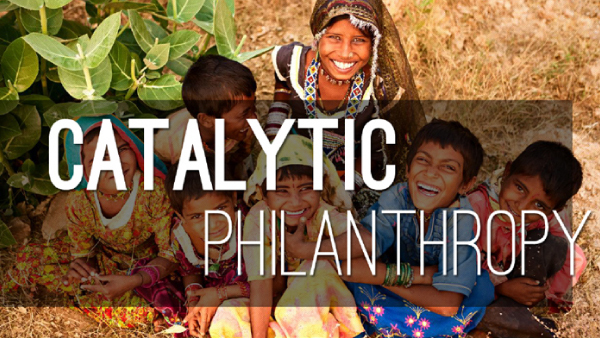In the world of the public sector there are three overarching types of philanthropy:
- Traditional philanthropy
- Venture philanthropy
- Catalytic philanthropy
So what differentiates them?
Traditional philanthropy is the type with which you’re most familiar. This stream of philanthropy is concerned with which organizations an individual or firm chooses to support and how much time/money to donate to them. Individual non-profits are funded by donors and are responsible for implementing change. But what about the other two types?
Venture philanthropy has become more popular in the last few decades, especially within the corporate world. Followers of this philanthropy seek to increase the radius of influence and scale of impact of a non-profit organization. With this approach it is the specific capacity building channels of the non-profit organization that receive funding, while the entire organization is still responsible for actualizing positive change.
Catalytic Philanthropy is an emerging stream in the public sector. As you can imagine, catalytic philanthropy works to act as a catalyst (a trigger/supporter) to tackle social issues. It helps to propel multi-sector development campaigns to make a measurable impact. Its end goal, just like any other sort of philanthropy, is to support the campaign/project and motivate positive change using all possible tools and donor resources.
But how exactly does catalytic philanthropy work? Who engages in this type of charity?
 Our best example: The Bill & Melinda Gates Foundation.
Our best example: The Bill & Melinda Gates Foundation.
Bill Gates is the number one fan of capitalism; it has certainly served him well throughout his life. In his words, “Capitalism is the best system ever devised for harnessing self-interest to drive innovation and fuel economic growth.” But even Gates, a certified billionaire, recognizes the pitfalls of this economic paradigm.
Capitalism fails to recognize the needs of the poorest persons. Within a capitalist society, the vast majority of businessmen and entrepreneurs do not dedicate their time and effort into developing products/services to for those who cannot afford to purchase them.
Yes, governments will offer social services to provide a safety net for its citizens, but often these implements still fall short of meeting actual needs. Governments often offer short term band aid solutions rather than taking the time to tackle the root causes. With governments constrained by short election cycles, they are reluctant to invest in long-term projects that do not garner quick results.
In much the same way, non-profit organizations struggle to engage in long-term transformative initiatives because they are constrained by tight budgets and the pressure to produce quarterly/annual results for their donors.
This is where catalytic philanthropy comes to the table. Larger-than-life ideas can blossom into a reality with incredible social returns. Private sector does not invest in these ideas because the returns go to society, rather than their pockets. Thus, it only makes sense these social ideas would work from the public sector.
Here are two examples of The Bill & Melinda Gates Foundation using catalytic philanthropy to enact change on a macro-level:
- First, they acted as a catalyst for a social issue that had been overlooked. When the organization made its first big grant for malaria research, it doubled the amount of money spent on the cause worldwide (not because the amount donated was so significant, but rather because malaria research had historically been greatly underfunded). Thanks to a decade of intensified efforts, more than one million young children who would have died from malaria are alive today. And bigger wins in malaria are still to come. Bill gates says that he and Melinda “are optimistic that the world will have an approved malaria vaccine within a few years, which will start the countdown to eradicating malaria altogether”.
- Second, they have also engaged in catalytic philanthropy by searching for a different approach to tackle a social issue where previous efforts had not been effective. The organization saw how much money the US government was spending to improve education, but after speaking with teachers, the organization determined that technology could provide the greatest improvement to the educational system. Today, the foundation is working with teachers and a number of districts around the country to set up systems that give teachers the feedback and support they deserve.
The bottom-line for The Bill & Melinda Gates Foundation is to act as a catalyst, funding grandiose ideas. Most of the projects will fail, but all will take big risks with the hope/expectation that a few initiatives will succeed. Once these ideas demonstrate some level of success, governments and businesses will be much more willing to invest in them.
The billionaire himself urges, “anyone who wants to make a meaningful difference at the local, national, or global level should look at the big opportunities businesses and governments leave untouched. If you’re able to forgo big financial returns and accept some risks, you’ll find enormous opportunities for improving lives.”
If I were you, I’d take his advice.






